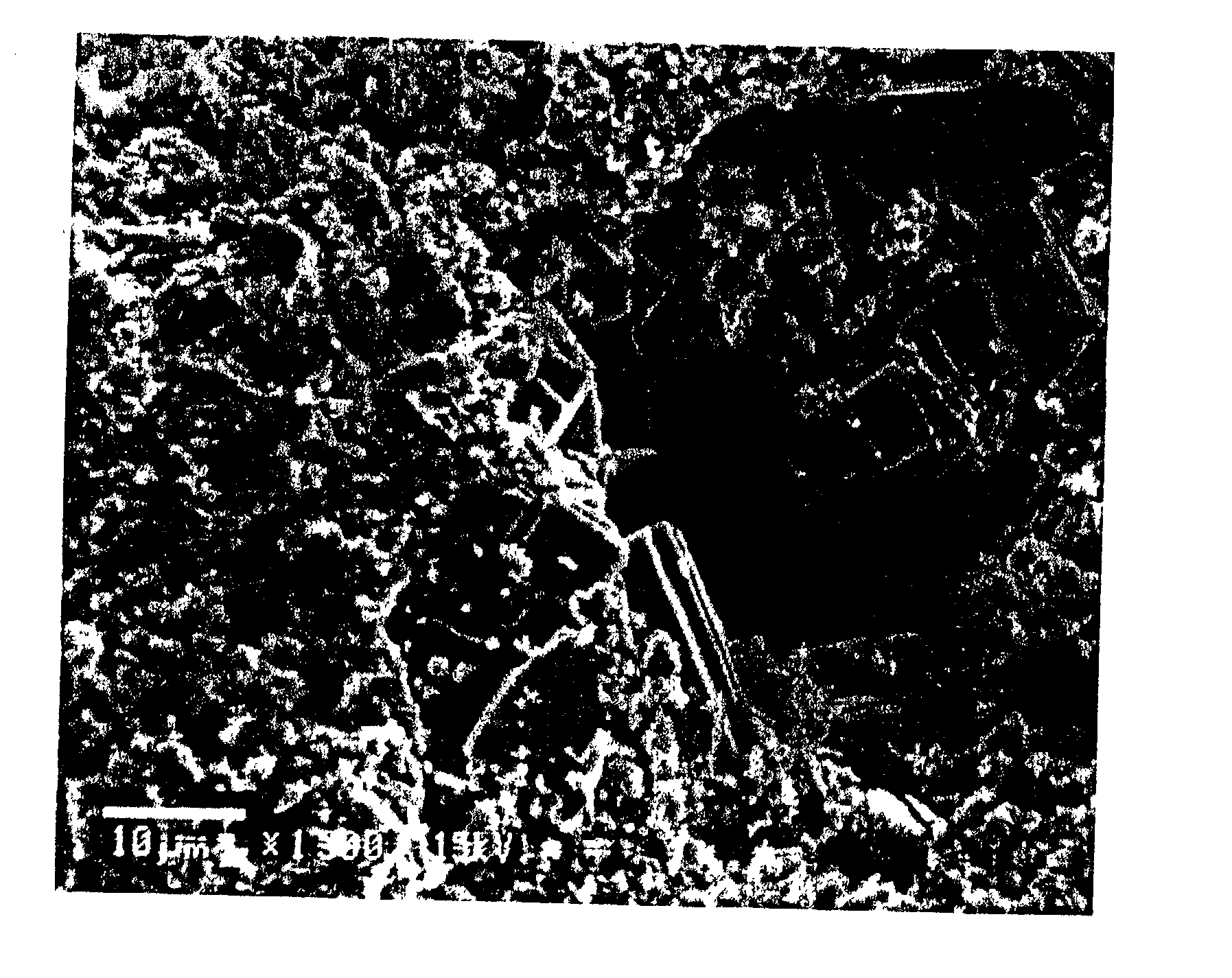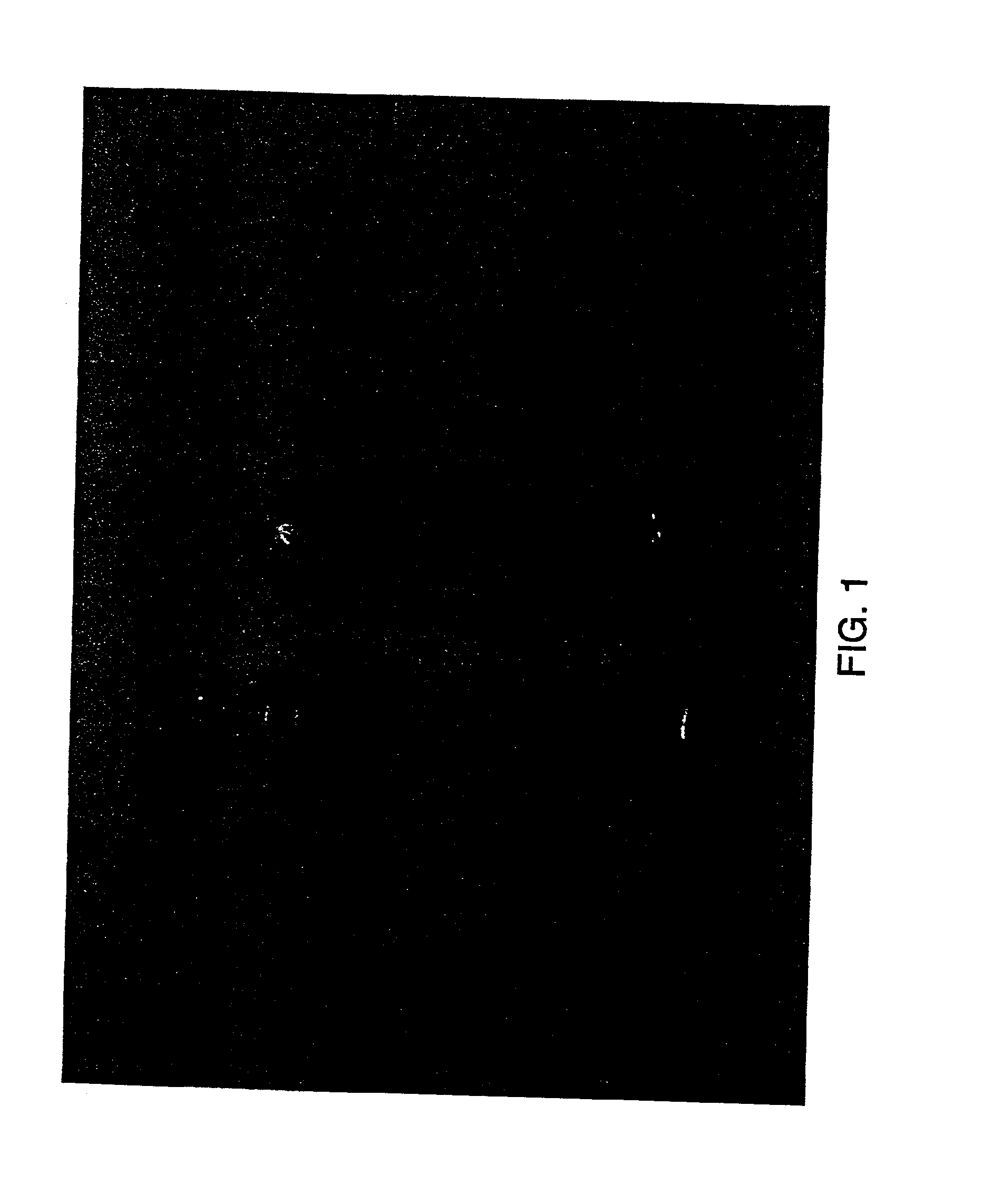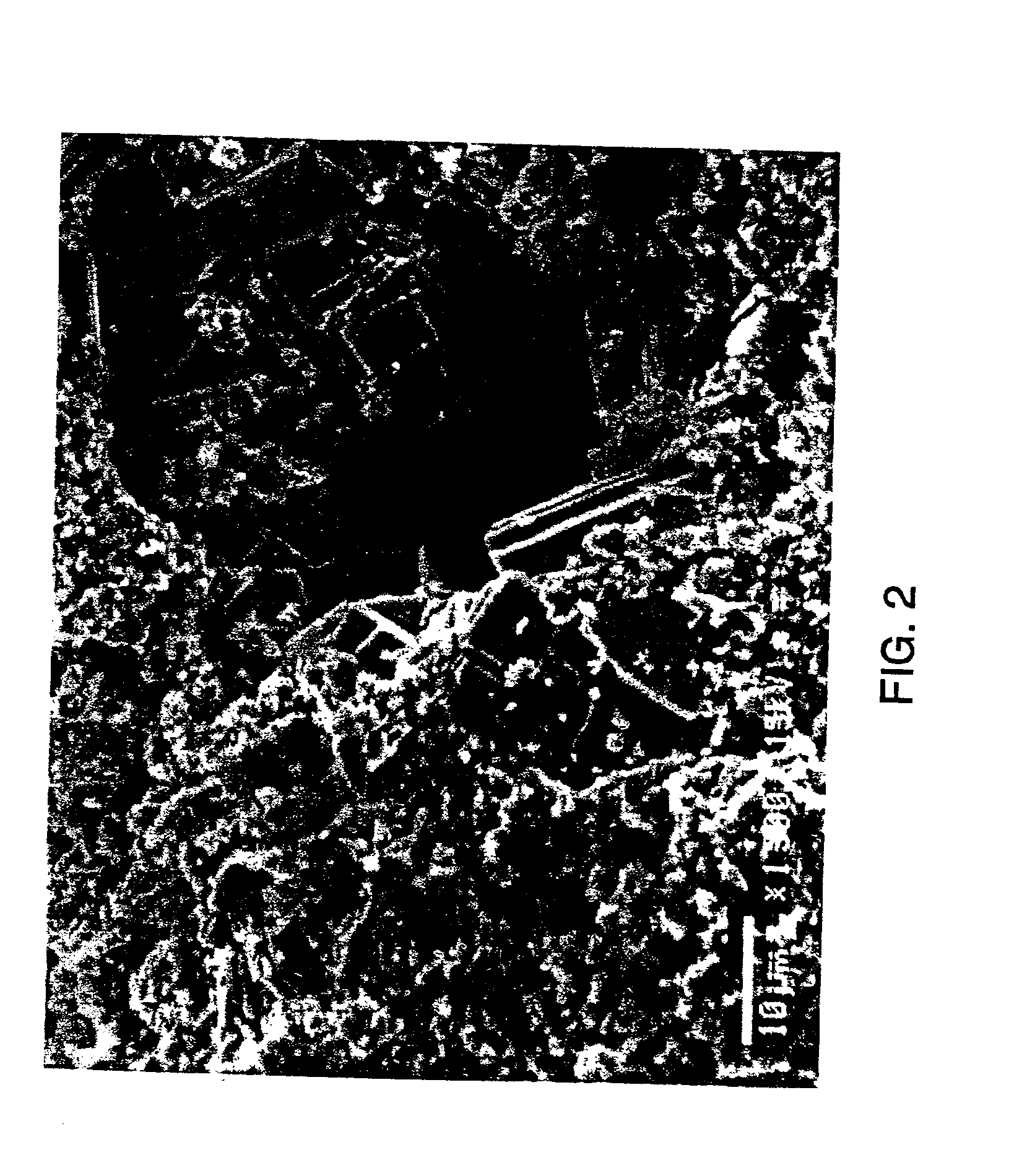Sintered polycrystalline gallium nitride and its production
a technology of polycrystalline gallium nitride and gan, which is applied in the direction of synthetic resin layered products, chemical/physical processes, inorganic chemistry, etc., can solve the problems of low or no chemical bonding between gan grains, ineffective crystal growth source, and high cost of cvd-like methods
- Summary
- Abstract
- Description
- Claims
- Application Information
AI Technical Summary
Benefits of technology
Problems solved by technology
Method used
Image
Examples
example 1
Commercially available GaN powder (0.3 g) was pressed in the form of a pill and then placed in a single-ended tube of Vycor® brand glass. The tube was evacuated and the open end sealed by torch welding. The sealed tube was placed inside a commercial hot isostatic press and heated at rate of 5° C. / min to 1150° C., at which time the pressure was increased to 30,000 psi (2 Kbar). After full pressure was reached, the temperature was raised to 1200° C. and held for 30 minutes. The temperature then was decreased at a rate of 10° C. / min and the pressure decreased to atmospheric pressure. GaN pills sealed in a Vycor® tube are shown before and after HIPing in FIG. 1.
The sintered polycrystalline GaN part was removed by grinding off the quartz glass enclosure. The sintered polycrystalline GaN part was solid and hard, with a measured Vickers hardness of 2.3 GPa. The microstructure of the HIPed GaN part is shown in FIG. 2. A number of grains about 10-20 μm in diameter are Visible, along with man...
example 2
Commercially available GaN powder (0.85 g) was pressed into the form of a cylindrical pill measuring 0.440″ (11.2 mm) diameter and 0.165″ (4.2 mm) thickness and having a density of 2.07 g / cm3. The pill was placed inside a container made of hexagonal boron nitride (hBN) and the entire assembly placed in a high pressure / high temperature (HP / HT) cell in a belt-type apparatus. The hBN acts as a pressure-transmitting medium and prevents contamination of the GaN pill.
The cell pressure was gradually increased to 58 Kbar in 3 minutes 20 seconds and then electrical power was turned on to heat the cell. The power was held steady for 25 minutes so that the GaN pill was sintered at 1500° C. for 15 minutes. The sintered GaN pill was cooled by reducing the power to zero in 1.5 minutes. The pressure was held steady for another 4 minutes and the pressure was reduced to nil in 3 minutes and 20 seconds. A sintered GaN compact was recovered from the cell. This compact had a density of 5.9 g / cm3 (as me...
example 3 (
Prior Art)
Polycrystalline GaN was formed according to the teachings of Suscavage, et al. 1.0 g of Ga metal was placed in an alumina boat and partially covered with an alumina plate. Both alumina parts were enclosed in a quartz tube and placed in a controlled-atmosphere tube furnace. 2.0 g of NH4Cl was also placed in the tube furnace near one end. The chamber was evacuated using house vacuum and then refilled with argon. These steps were repeated once more. Then, the chamber was put under flowing argon at a rate of 1 SCFH and NH3 at 0.5 SCFH. After 10 min, the temperature of the furnace was raised to 800° C. When it reached temperature, the alumina crucible containing NH4Cl was heated to ˜250° C. using a secondary heater. The system was kept under these conditions for 4 hr, and then the heaters were turned off. At the conclusion of the run, films of polycrystalline GaN were removed from the alumina crucible and lid. The microstructure of the film is shown in FIG. 5. The film has a co...
PUM
| Property | Measurement | Unit |
|---|---|---|
| apparent density | aaaaa | aaaaa |
| apparent density | aaaaa | aaaaa |
| thickness | aaaaa | aaaaa |
Abstract
Description
Claims
Application Information
 Login to View More
Login to View More - R&D
- Intellectual Property
- Life Sciences
- Materials
- Tech Scout
- Unparalleled Data Quality
- Higher Quality Content
- 60% Fewer Hallucinations
Browse by: Latest US Patents, China's latest patents, Technical Efficacy Thesaurus, Application Domain, Technology Topic, Popular Technical Reports.
© 2025 PatSnap. All rights reserved.Legal|Privacy policy|Modern Slavery Act Transparency Statement|Sitemap|About US| Contact US: help@patsnap.com



